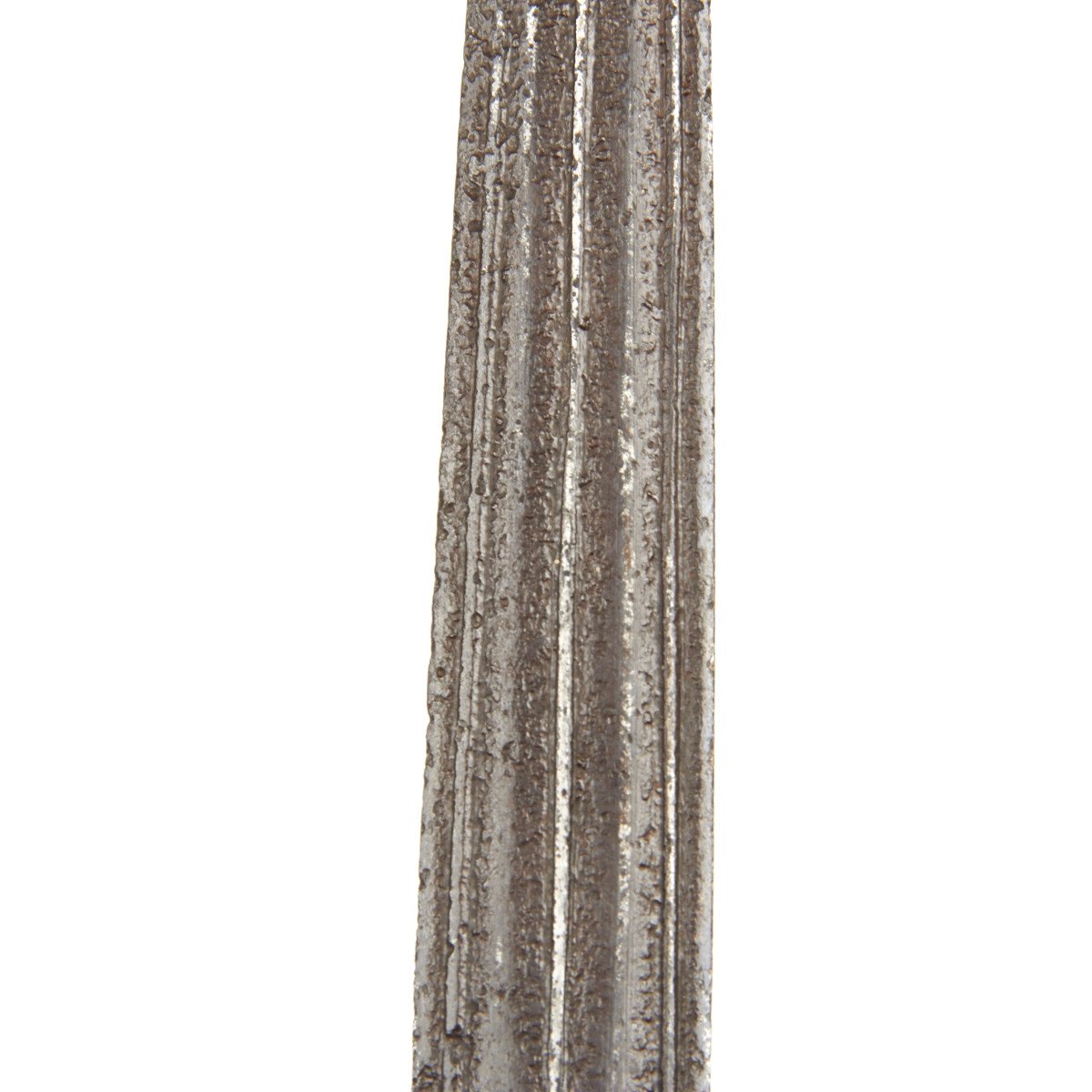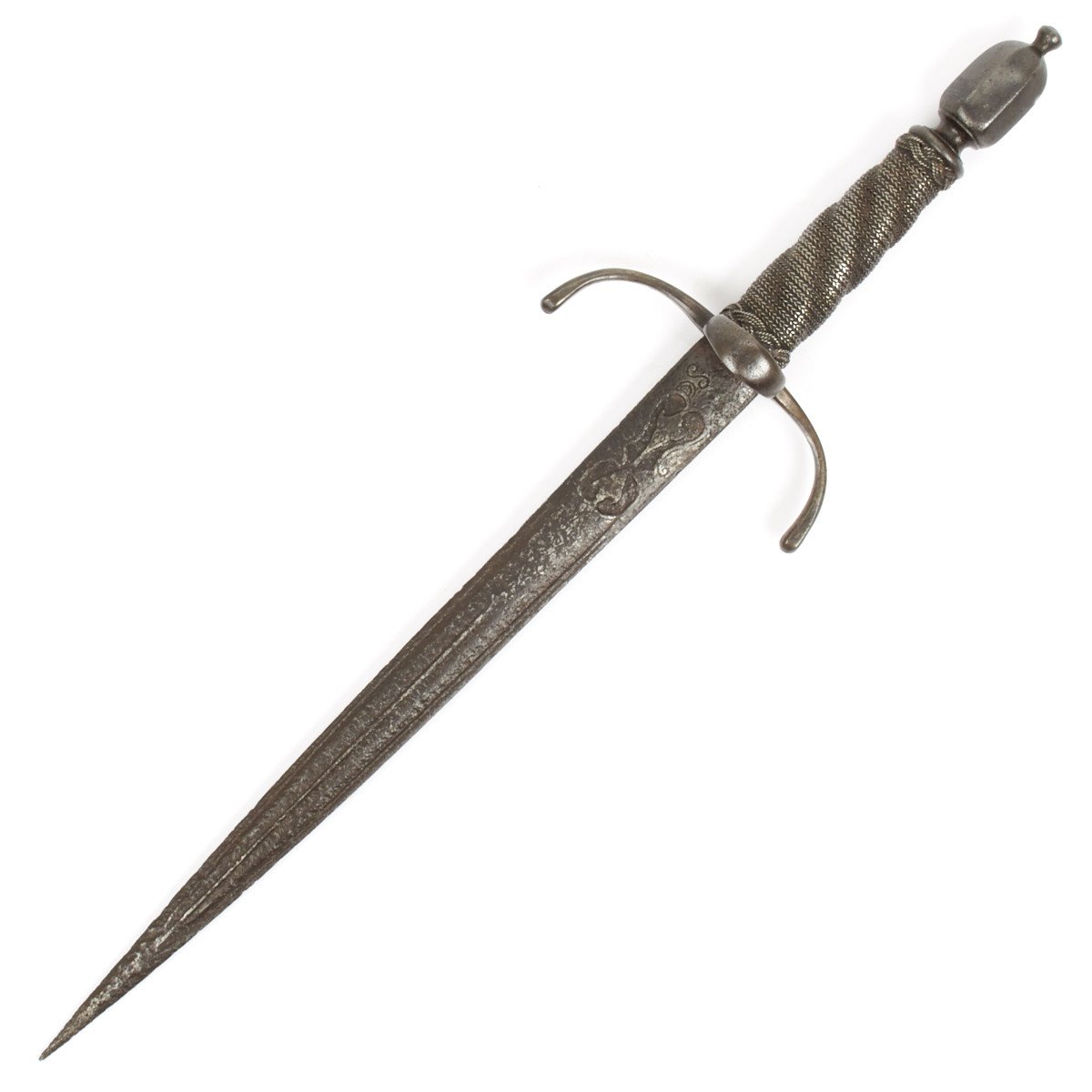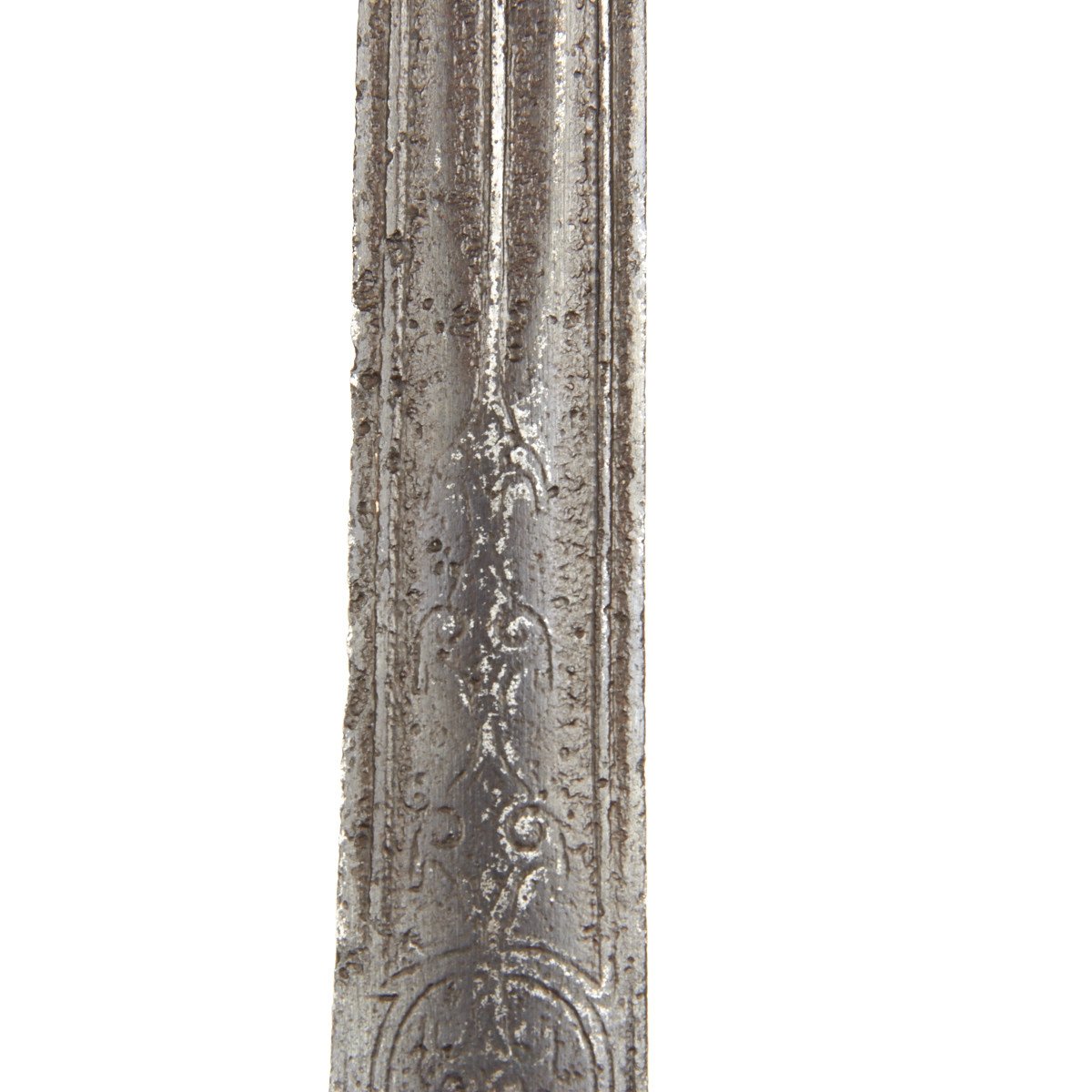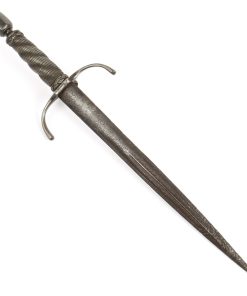Original 16th Century Scottish Main Gauche Parrying Left Hand Dagger Original Items
$ 2.995,00 $ 748,75
Original Item: One-of-a-kind. This is a fascinating Elizabethan era dagger dating from 1580-1595 that was carried by both Gentlemen and Officers of the period. Know as a Main Gauche dagger meaning left hand, it was used in conjunction with a rapier or similar sword in the right hand. The hooked cross guard designed to protect your hand from your opponent’s sword blade. There is also a circular cross guard attachment which provided the user an opportunity to trap his foe’s blade allowing a fatal lunge with the sword in his right hand.
The parrying dagger is a category of small hand-held weapons from the European late Middle Ages and early Renaissance. These weapons were used as off-hand weapons in conjunction with a single-handed sword. As the name implies they were designed to parry, or defend, more effectively than a simple dagger form, typically incorporating a wider guard, and often some other defensive features to better protect the hand, as well. It may also be used for attack if an opportunity arises. The general category includes two more specific kinds of weapon: sword breakers and trident daggers.
The use of this off-hand weapon gradually fell out of favor as sword fighting evolved into the modern sport of fencing. The use of progressively lighter primary weapons such as the small sword, épée, and foil allowed for greater speed as the fencer needed less and less protection for himself as double hits became more and more allowed in the sport fencing.
This daggers appears to be original to the 16th century
This dagger sold off from a Scottish manor house after three centuries of armorial decoration the dagger has a thirteen inch double sided blade stamped with deep armorer markings and incorporating blood channels. Shows some ancient pitting particularly toward the point. The hilt, (grip), is of finely bound iron plaited wire with a traditional urn shaped iron pommel (the pommel could be a replacement). The dagger measures 19″ overall.
Much replicated in the 19th century for medieval displays, this dagger has the quality of workmanship and markings of an original to the Elizabethan period.
Fast Shipping with Professional Packaging
Thanks to our longstanding association with UPS FedEx DHL, and other major international carriers, we are able to provide a range of shipping options. Our warehouse staff is expertly trained and will wrap your products according to our exact and precise specifications. Prior to shipping, your goods will be thoroughly examined and securely secured. We ship to thousands clients each day across multiple countries. This shows how we're dedicated to be the largest retailer on the internet. Warehouses and distribution centres can be located throughout Europe as well as the USA.
Note: Orders with more than one item will be assigned a processing date depending on the item.
Before shipping before shipping, we'll conduct a thorough inspection of the items you have ordered. Today, the majority of orders will be delivered within 48 hours. The delivery time will be between 3-7 days.
Returns
The stock is dynamic and we cannot completely manage it because multiple stakeholders are involved, including our factory and warehouse. So the actual stock may alter at any time. It's possible that you may not receive your order once the order has been made.
Our policy is valid for a period of 30 days. If you don't receive the product within 30 days, we are not able to issue a refund or an exchange.
You can only return an item if it is unused and in the same state as the day you received it. You must have the item in its original packaging.
Related products
Uncategorized
Uncategorized
Uncategorized
Uncategorized
Uncategorized
Uncategorized
Uncategorized
Uncategorized
Uncategorized
Uncategorized
Armoured Fighting Vehicles of the World: AFVs of World War One (Hardcover Book) New Made Items
Uncategorized
Uncategorized
Uncategorized
Uncategorized
Uncategorized
Uncategorized












































































